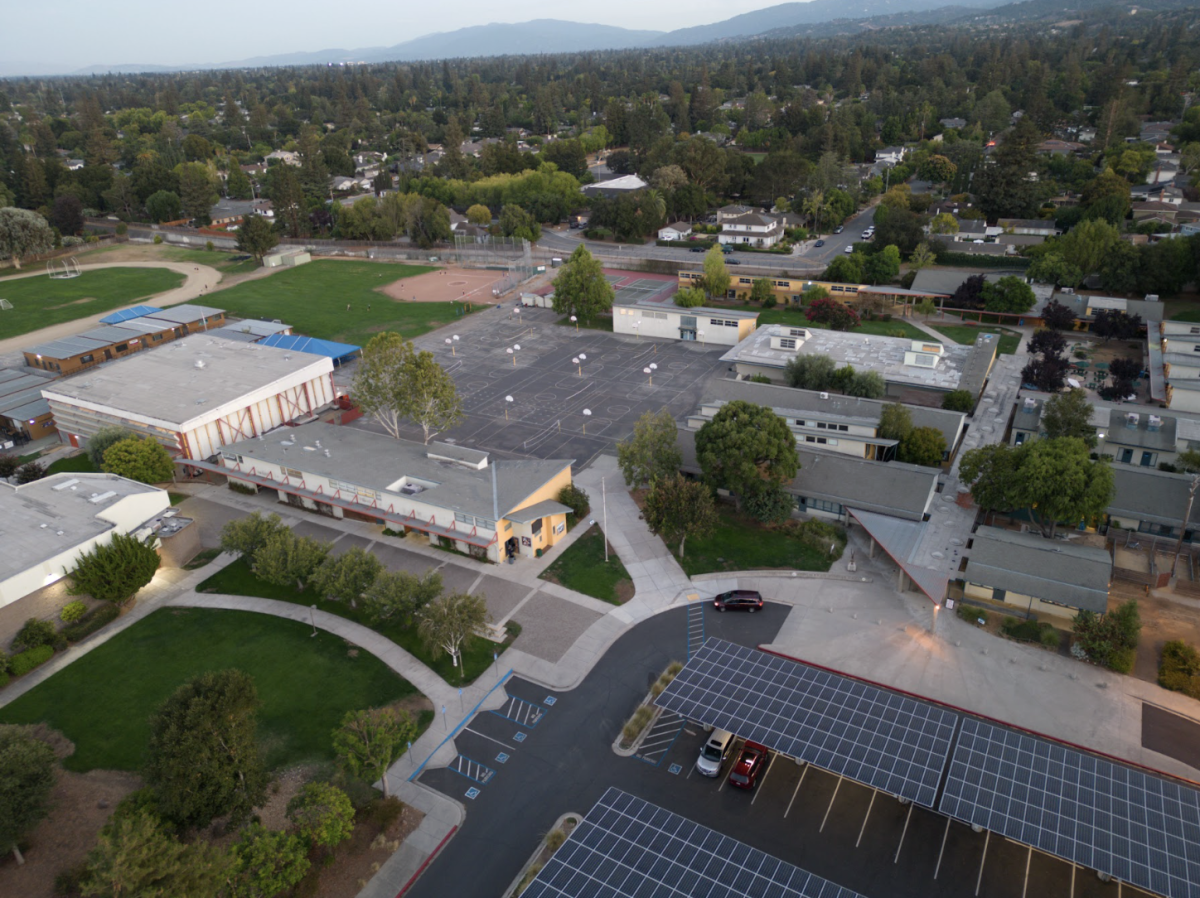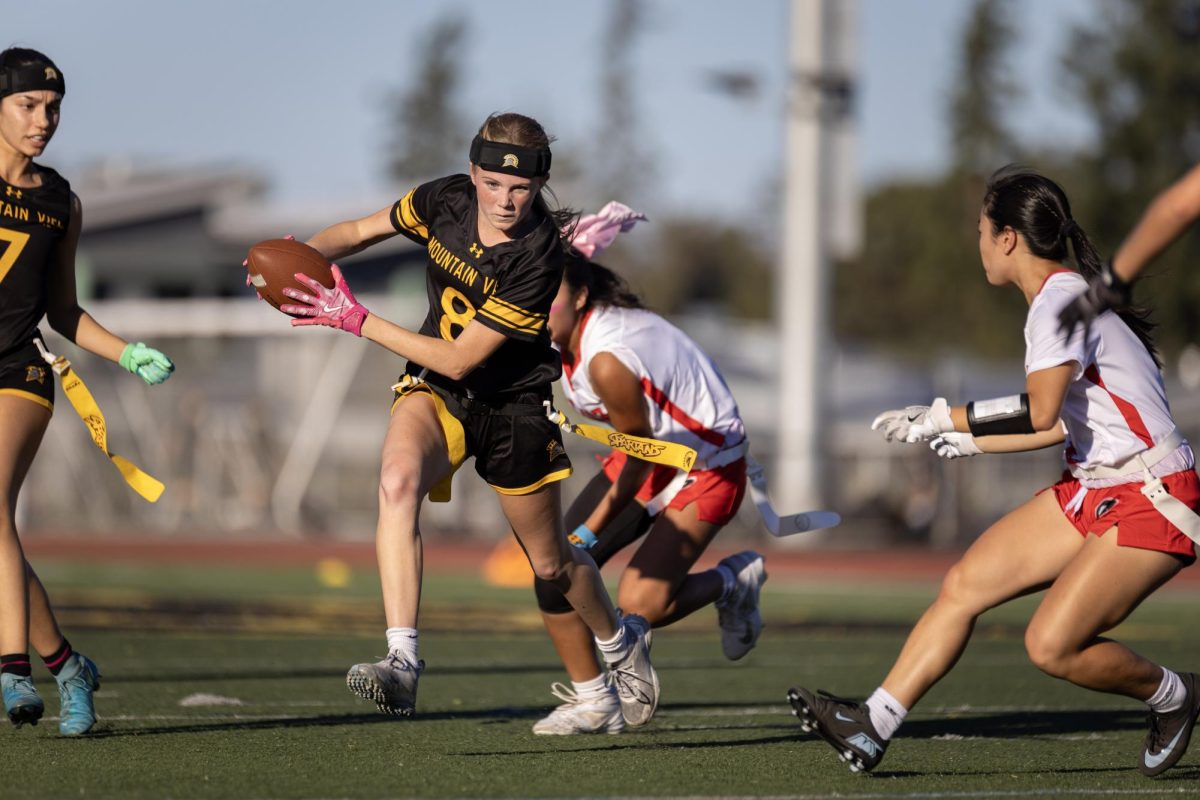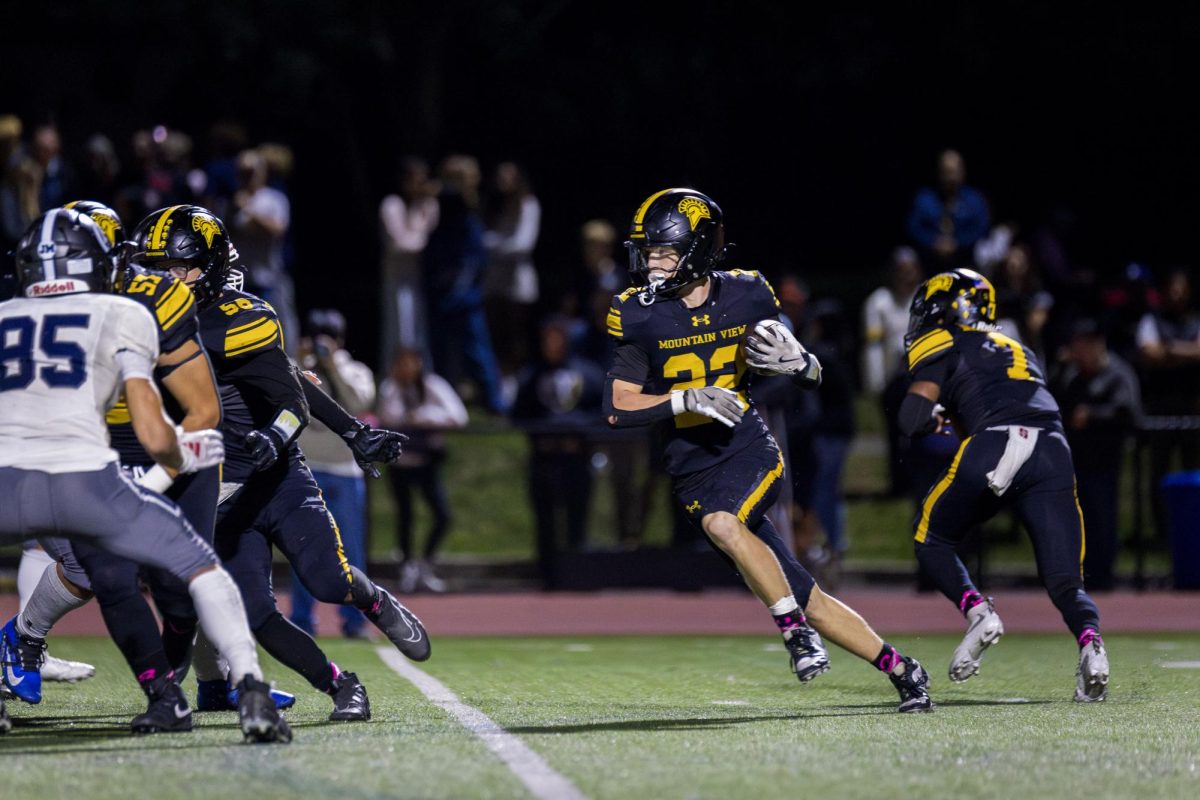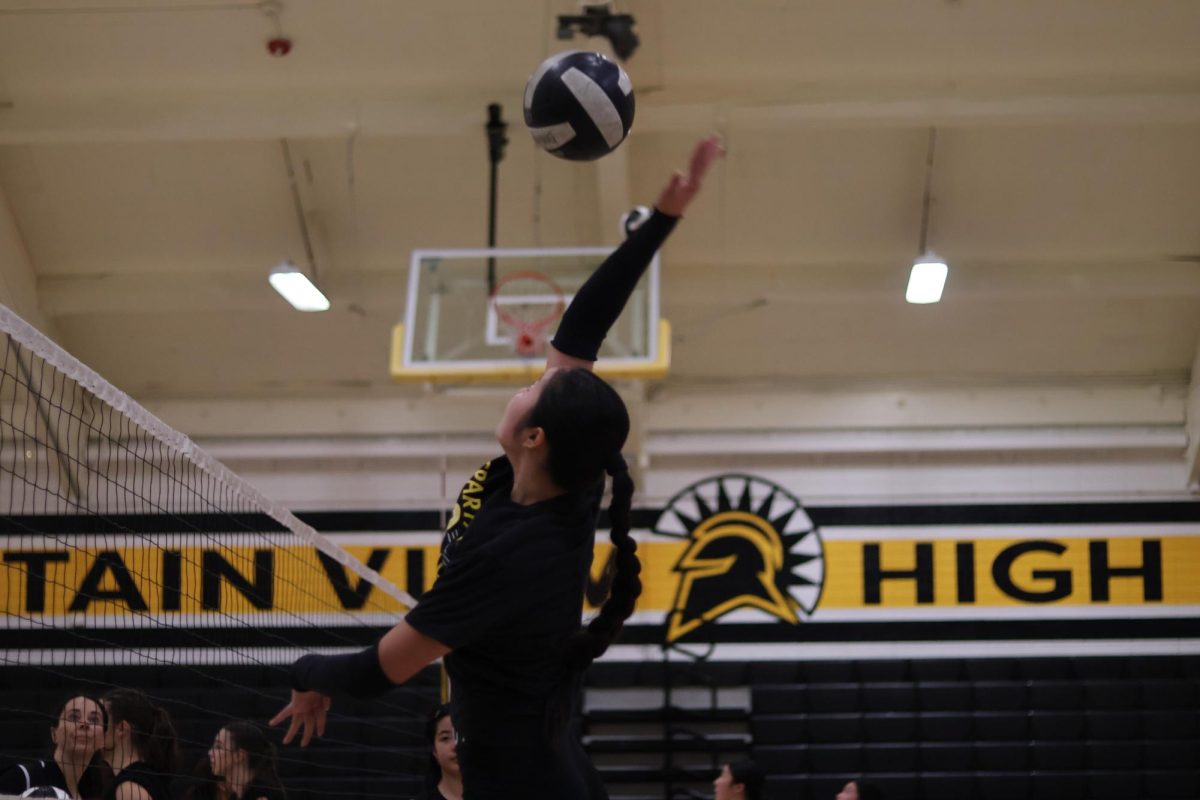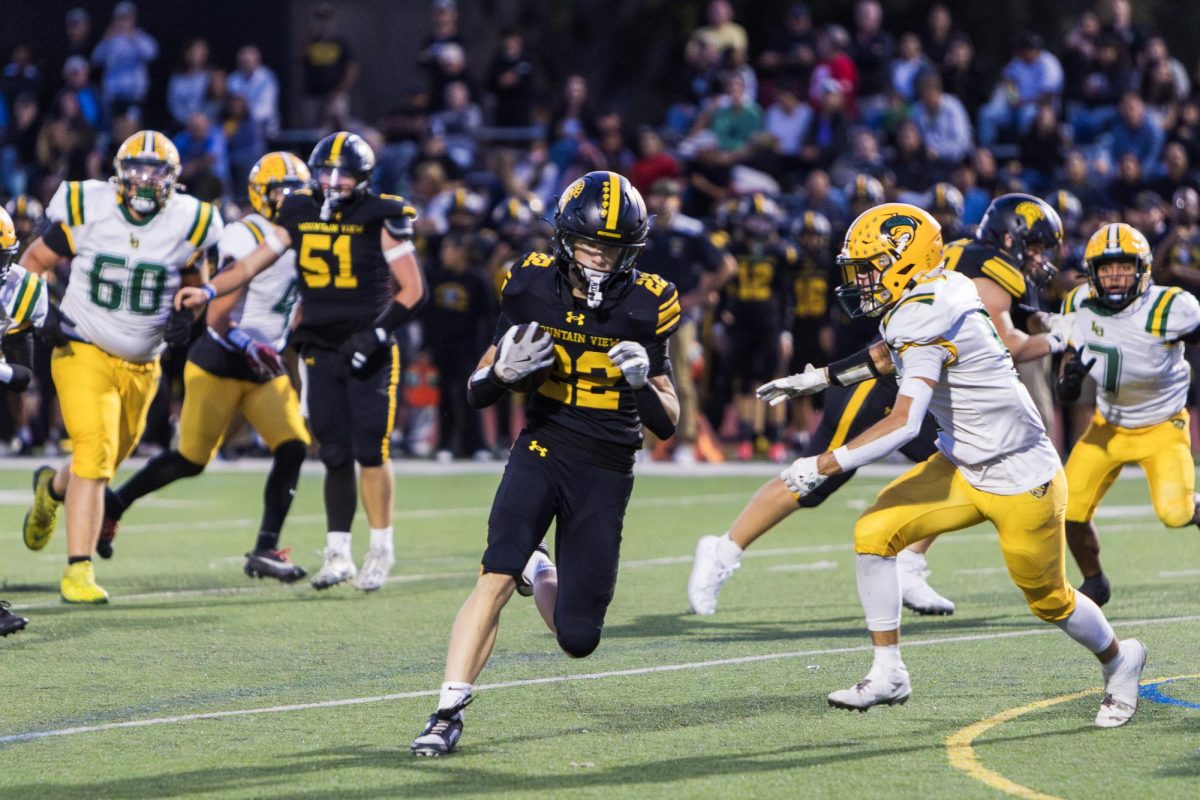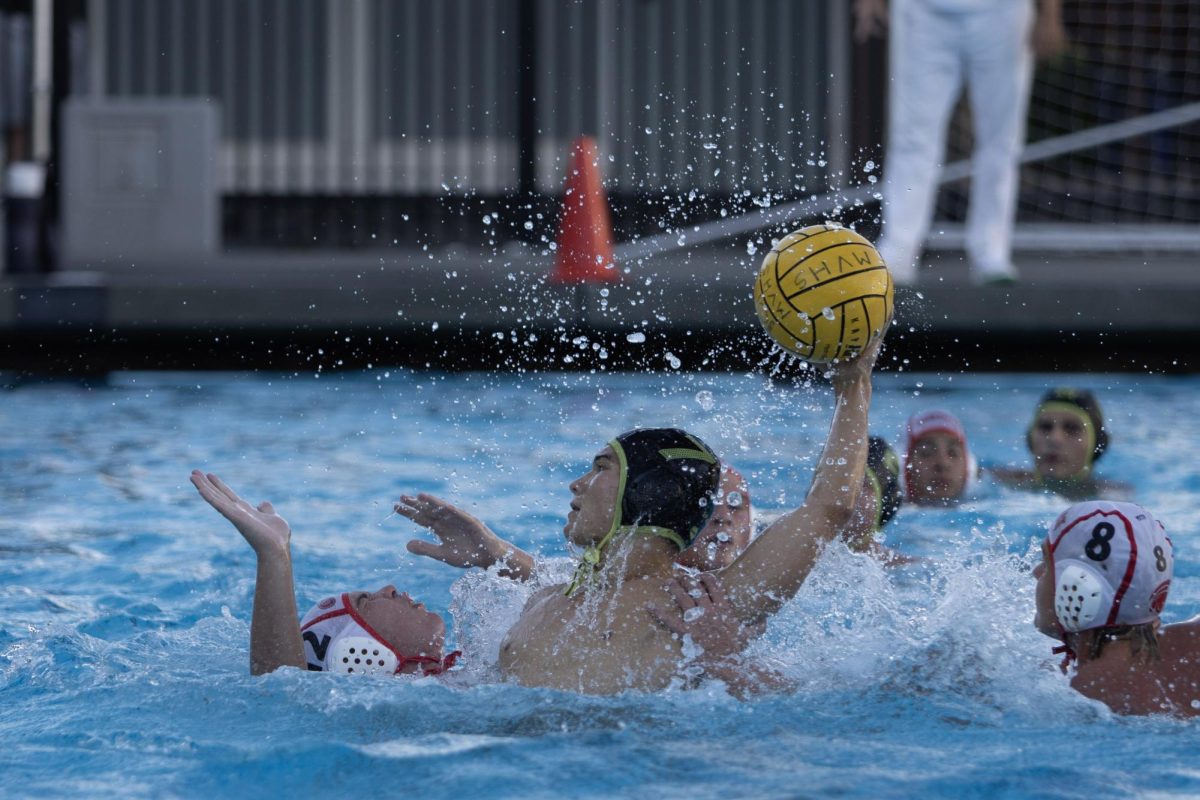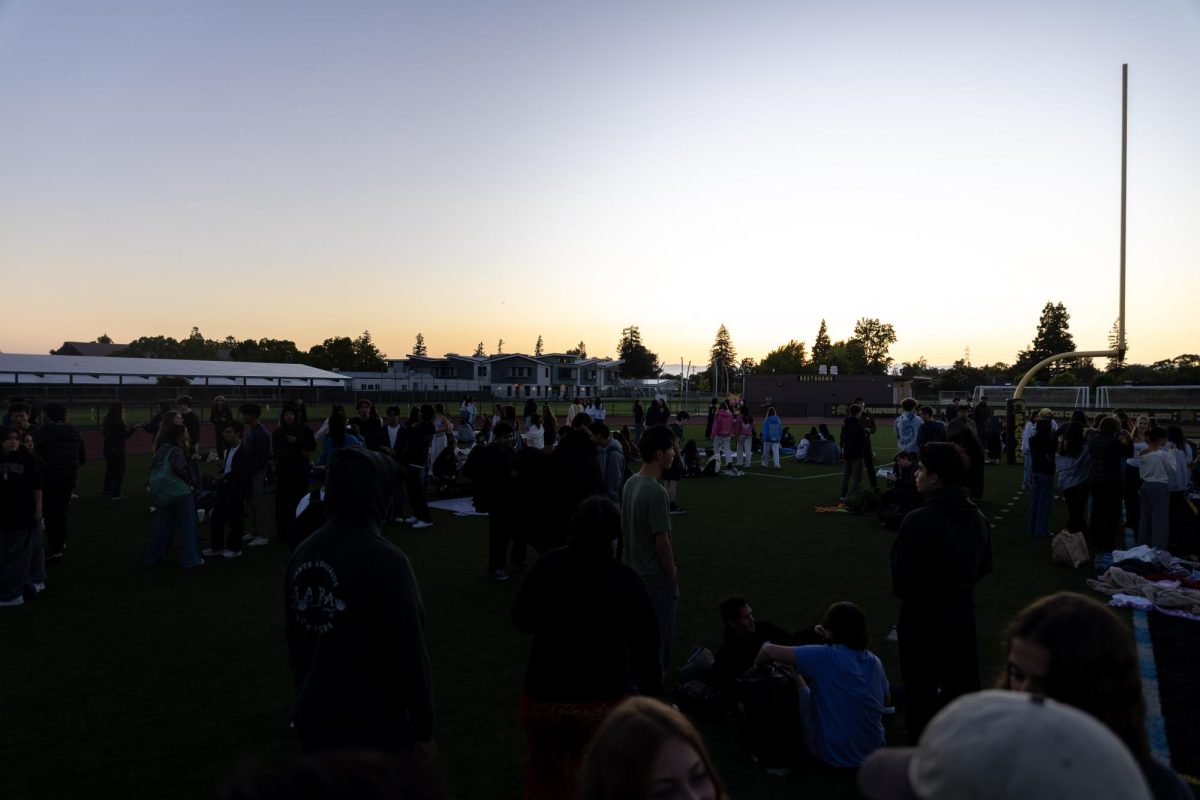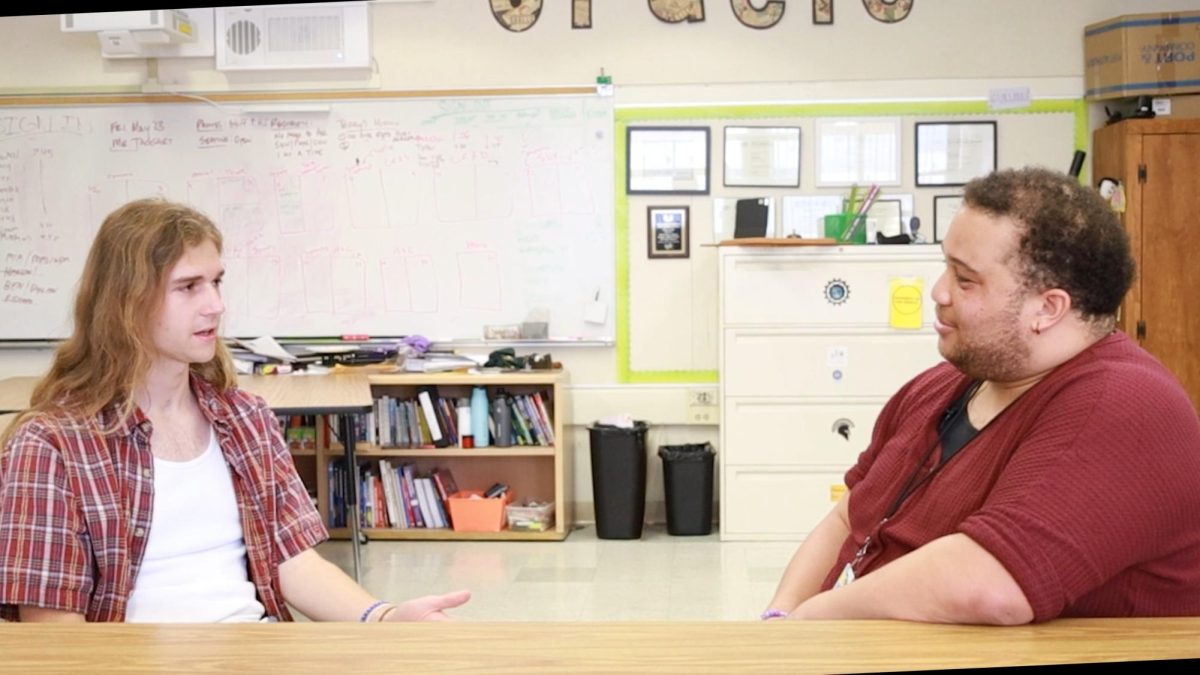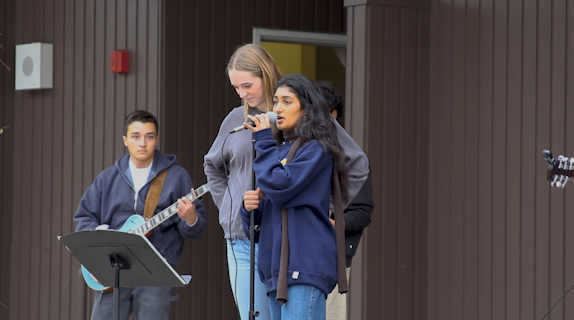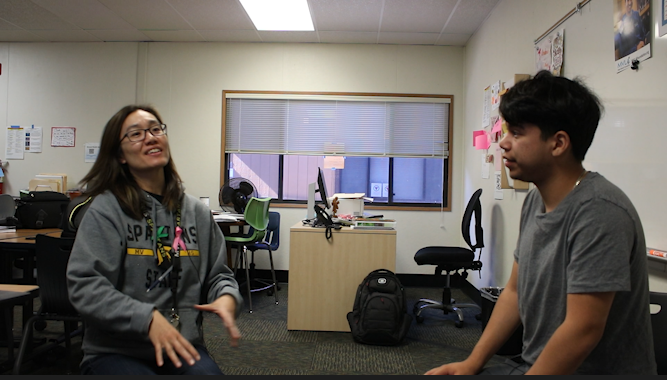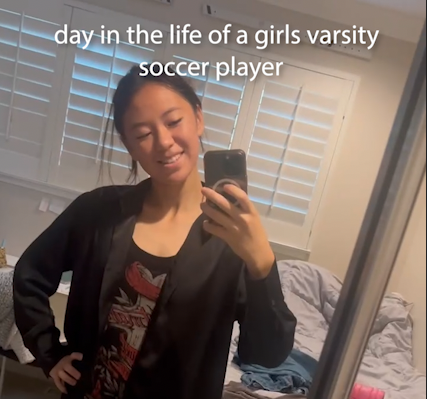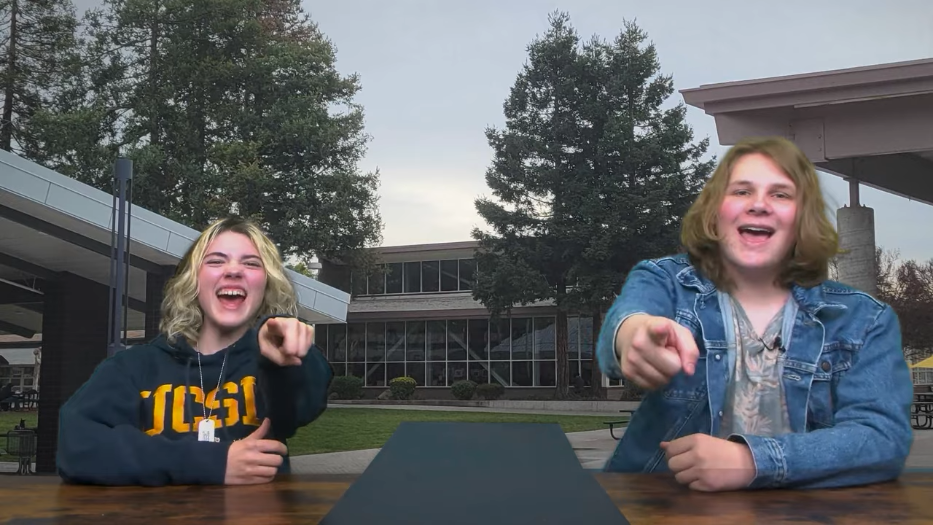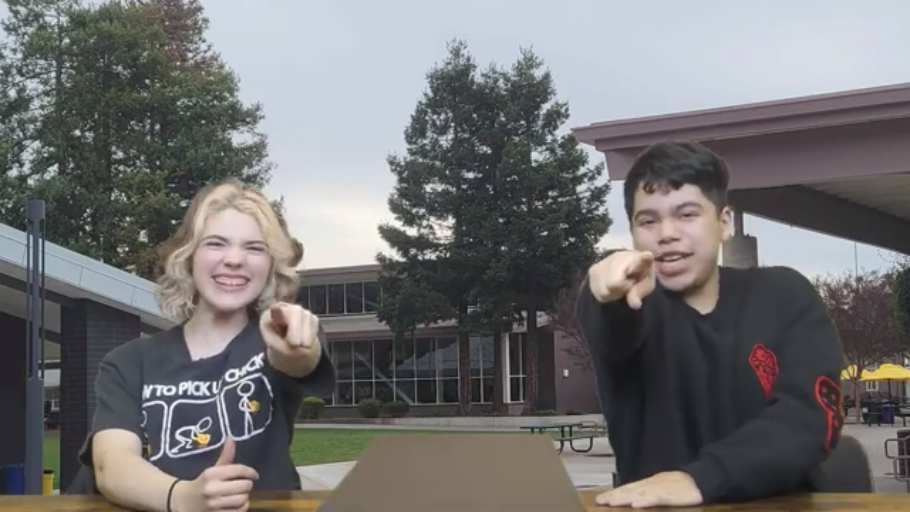Threats of violence on campus reveal school-wide anxiety and confusion
Mar 4, 2022
Danie Robledo, a social science and AVID teacher, said she felt like she was playing a “game of mental calculus” when she received an email about a threat of violence in the district on Jan. 7.
“It was hard to choose to close the windows and doors because I want to be safe and I want my students to be safe,” Robledo said. “We had to decide between airflow [to prevent the virus from spreading] and security.”
Robledo said she talked to her students the way she would’ve wanted to be addressed: truthfully and transparently.
She said to them: “We weren’t given a reason [for the shelter-in-place] but as soon as we know, we’ll tell you. We’re going to do our best to keep working, but if you need to talk to your families and tell them where you are, that you’re okay, go ahead.”
Robledo said she was fortunate to have a co-teacher to rely on and the ability to text other teachers in an event of emergency.
She added that for substitute teachers, threats of violence and drills can be “very scary, especially since they are not locked into our tech infrastructure.”
Overview
Teachers were emailed to lock doors, close windows and shelter in place at approximately 11:15 a.m. on Jan. 7. A loudspeaker announcement relayed the same information.
Principal Michael Jimenez said that a formerly expelled student from Los Altos High School had called both Mountain View and Los Altos High School to threaten the use of explosives and firearms on both campuses.
Local authorities detained the minor, who had not entered either school, at their home. The Mountain View Police Department later gave clearance and the shelter-in-place order was lifted around 30 minutes after the original announcement.
The district administration issued a brief email to the MVLA community at 12:21 p.m., saying that the schools worked with local law enforcement to implement a shelter-in-place following the threat.
Survey Responses
In response to a survey sent by Oracle, 31 registered staff members at the school anonymously wrote about their experiences and thoughts on the shelter-in-place.
Teachers were forced to confront the administration’s lack of communication using their best judgment to keep students calm, according to the results of the survey.
Many staff members expressed confusion about the difference between a shelter-in-place announcement and a lockdown order, and said they felt unprepared to react.
While some teachers said they continued instruction after closing the blinds, others fully locked down their classes. Some teachers said they were planning how to escape from the new two-story buildings through the windows if necessary, while others said they thought it was a drill.
If you need to talk to your families and tell them where you are, that you’re okay, go ahead
Many teachers said that keeping students calm was even more challenging. Some tried to answer student questions, while others tried to continue teaching to make the class feel more comfortable.
“I told students I was closing the door because a storm was coming to [keep students calm],” one staff member said. “I just wish I knew more about the threat.”
Specific teacher experiences
As an alumna of the school, Robledo said that her reaction to threats of violence has changed significantly since her time as a student.
“I remember [in March 2003] sitting in the science quad wondering if they were going to postpone this quiz because of a threat of violence… but I don’t remember feeling as scared as I do now,” Robledo said.
Robledo said that being responsible for students and having threats appear more often increased her fears.
“I was in eighth grade when Columbine happened. That signaled the beginning of taking drills and intruders a lot more seriously than when I was growing up,” Robledo said.
In response to the bomb threats ocurring at neighboring high schools and recurring fire drills at the school, Robledo said that while they were scary, they were more of an abstract threat.
“Having it happen here made it more difficult. I had to look at a sea of faces and decide if I was going to tell them the truth,” Robledo said.
Robledo said not knowing the nature of the situation on Jan. 7 was difficult.
“I told them it could be a family of angry raccoons or something happening in the neighborhood. We had no idea,” Robledo said.
Dance teacher Lauren Kato said she felt prepared when the latest shelter-in-place was called. Five years ago at the school, she said her class went into “an extreme lockdown” instead of a shelter-in-place because no one knew what the shelter-in-place order meant.
Because of this experience and subsequent training, Kato said this time, she knew she and her students weren’t in immediate danger and was able to reassure everyone.
Sophia Caramagno, a social science teacher, said she saw the repeated fire drills and calling in bomb threats as an indication that “thing are not great” at the school.
“That kid needs support, and that kid needs help,” Caramagno said. “It’s really easy to be angry at the kids who keep setting the fire alarms off… but sometimes that’s how people react to a really bad time.”
Caramagno said she wasn’t fazed by the amount of information that the administration shared.
I told them it could be a family of angry raccoons or something happening in the neighborhood. We had no idea
“There are lots of rules about what can be made public, especially when it involves a young person,” Caramagno said. “I felt like [the administration] shared more information than I was expecting.”
Caramagno said that she’s noticed people reacting in different ways in periods of instability and anxiety.
“I’ve been a teacher for 25 years… this time, we have COVID and a lot of [transitions] happening in America,” Caramagno said. “People face a lot of stress and dark emotions, and some people respond to that [with violence and threats].”
Maria Porch, a Los Altos-based psychotherapist, said that the pandemic “is a [case] of people feeling powerless.” She said that when people are feeling unhappy and losing control, extreme behaviors like threats of violence can occur.
Caramagno said that in pre-pandemic times, people were more concerned by on-campus threats than they are now.
“The exhaustion [from having to continuously react to COVID threats] really became clear to me when [the drill] started,” Caramagno said. “My reaction to it was just so blasé.”
We’re not given hazard pay or bonuses if we take a bullet for our kids, and I can’t think of any other job where that’s true
Caramagno was in the staff workroom during the period when the threat occurred because her student teacher was teaching the class.
“It was extra difficult [for the student teacher] because it was his first time reacting to a threat… and he was great. He knew exactly what to do and did everything right,” Caramagno said. “But it was a lot more [dramatic] for him than for me in an office.”
At the previous schools Carmagno has taught at, she said she had been faced with a student wielding a box cutter, and has done shelters-in-place for toxic chemical spills, armed robbers, and wild dogs on the loose. She said she has also witnessed and had to break up a number of fights.
“We’re in charge of our students. Most of the time that means making sure they’re getting enough water and sleep, but sometimes it means putting our lives on the line,” Caramagno said. “We’re not given hazard pay or bonuses if we take a bullet for our kids, and I can’t think of any other job where that’s true.”
“The Big Four”
Assistant Principal Daniella Quiñones said the responsibility of safety and security at school falls on the principal and the four assistant principals.
Together, they manage any threat to the school by following the “Big Four,” a set of emergency procedures authorized by law enforcement.
The “Big Four” consists of four standard procedures to threats at the school: “Drop, Cover, and Hold,” “Run, Hide, and Defend,” “Evacuation,” and “Shelter-in-Place.”
In the most recent incident, the shelter-in-place procedure was implemented to protect students and staff from the threat. Quiñones said the school initiates this procedure any time it is necessary to isolate the students and staff from a potential danger in the outside environment.
“The threat can be from a virus or hazardous chemicals. Or it could be a person who’s threatened the community,” Quiñones said.
During a shelter-in-place, classroom doors are locked with students and staff inside while the threat is being assessed. Though some teachers paused instruction during the most recent incident, teaching should continue according to the 20-21 MVHS School Safety Plan document.
If the threat of violence is more severe and immediate, a “Run, Hide, and Defend” response will be initiated. According to the Safety Plan, if it isn’t possible to run, people should initiate the lockdown process, formerly known as Code Red.
Lockdown entails locking the door, turning off the lights, closing blinds, using furniture to barricade the doors, hiding below window level, and making sure not to make noise or use phones.
According to a staff presentation by the school resource officers on Feb. 2, the administration will announce the location of the threat over the PA to make escape easier, though staff shouldn’t wait to receive this information before deciding a course of action.
I was frustrated and scared for what was going to happen not only [at TEDx], but all the of the people that I happened to be responsible for at that moment
In this same presentation, the administration announced that it had decided to use Remind, a group messaging service, to more easily communicate with staff members about threats and drills.
“There’s no manual for what to do,” Quiñones said. “It’s thinking on your feet, using your best judgment.”
The school plans to administer a Run, Hide, and Defend drill for students and staff by the end of March.
Student experiences: TEDx
Michelle Kelman, a senior and executive producer of TEDxMountain View High School, was standing by the doors of the theater during the TEDx event on Jan. 7 when William Blair, the district’s wellness coordinator, walked by and urged her to go inside and lock the doors in response to the shelter-in-place announcement.
Communication can absolutely help decrease anxiety. In some people, it can also increase anxiety. There is an individualized need here
“Because we had a video playing for TEDx, we barely heard the announcement over the PA system,” Kelman said. “It was frustrating for us as event organizers not to know what was going on, only hearing rumors.”
Kelman said that having Blair and assistant principal Marti McGuirk in the theater was helpful, as they were constantly communicating with law enforcement.
“As a leader in this position, I was really frustrated and scared for what was going to happen to not only the event, but all of the people that I happened to be responsible for at that moment,” Kelman said.
For students who had a free period when the shelter-in-place occurred, not knowing where to go was the most frightening, Robledo said.
Robledo gave her students time to debrief in class the next day, and said that her sixth period “had a lot to unpack,” discussing their reactions to the shelter-in-place.
Porch said that in dealing with a high-stress situation, comforting everyone can be difficult.
“Communication can absolutely help decrease anxiety. In some people, it can also increase anxiety. There is an individualized need here,” Porch said. “Being able to communicate a clear, consistent message is what’s important.”
She said that leaving each teacher to communicate different levels of information to their students can lead to gossip and “things becoming bigger than they are.”
Porch added that she grew up not having to face the reality of campus violence as a child, but now “we go through life trying to say it’s not going to happen here. But the reality is, we don’t know where [these events will occur] and when, and why and who.”
At the TEDx event last year, there was a Zoom bombing in which individuals entered the meeting, unmuted themselves, and repeated profane expletives, including the n-word.
Kelman said she saw few parallels between the two years, because the “worst thing that could happen online is words or images that you don’t want to hear or see.”
“In-person threats are more grave because they could [lead to] a life-or-death situation,” Kelman said.
Kelman added that students who disrupt class, by setting off fire alarms or threatening the school, don’t realize that they’re affecting the entire student body.
“People who are partaking in these shenanigans don’t realize how scary it is,” Kelman said. “You always want to hope it’s a prank but you don’t always know and that makes me really anxious.”
The anxiety caused by a perceived lack of safety makes it “very difficult to focus and to learn,” Porch said. “Feeling safe at school is paramount to a learning process. The reality is safety is of the utmost importance.”
Staff mental health
Without a clear staff check-in from the administration, many teachers said they felt lasting concern, according to the Oracle survey sent out.
“When we don’t feel safe, it’s a lot harder to be effective at what we do,” Porch said.
She added that “everybody has different tolerance for things, which I think is important to remember. At the core if somebody says they don’t feel safe, that’s what needs to be heard. Someone’s sense of safety can be totally different from somebody else’s sense of safety.”
Teacher 1* said that during the threat, they quickly locked the doors and continued teaching, determined to stay calm for their students.
But internally, they said their worst fears about the severity of the threat of violence persisted.
“In that moment, I was thinking how much of a dystopian hellscape the world is,” Teacher 1 said. “As a teacher, I’m expected to act like nothing’s wrong and be the adult in the room when there is a real, potentially life-threatening situation.”
While they acknowledged the administration’s need for discretion, they said this uncertainty prompted fear. Without more information, teachers were expected to make quick decisions and calm their students, all while dealing with their own fears.
Unprepared to react to the threat — something outside of their job description and training — Teacher 1 said their fears worsened.
I am not a soldier or a police officer, I am not paid to be calm when death is on the line
They described this lack of information as “incredibly stressful” and “upsetting,” and said they wanted more information during the drill.
“I am not a soldier or a police officer,” Teacher 1 said. “I am not paid to be calm when death is on the line.”
Campus changes with construction and new buildings also complicated teacher responses, Teacher 2* added. They said they were thinking about where to direct students to “run” or to build a barricade in a new building, since there was no clear procedure.
“I just stood by the classroom door for most of the time so that I would be in between my kids and anyone that might show up,” Teacher 2 said.
Similarly, in the portable classrooms, Kato said her class struggled to hear any information coming from the portable’s new PA system during the shelter-in-place.
While Teacher 2 said they felt uncertain in the moment, they also said that the administration’s role should extend to staff and student mental health long after.
They said teachers often have to ask administrators for support, counseling, and communication “to acknowledge that we are in fact experiencing a trauma.”
Teacher 2 said they understood the legal limits of what the administration could share, but said the impact of the stress and triggers could be better acknowledged by the district.
“A bare-bones ‘here’s what happened, thanks for what you did, please go about your day’ isn’t reassuring,” Teacher 2 said. “It feels like the human impact is being disregarded. That happens a lot in this district.”
Teacher 2 said this sort of response feels normalized at the school, and that they’ve felt the administration’s indifference throughout their time working here.
“Whenever there are events that are likely impacting the mental health and wellbeing of our staff and students, it feels like the administration only responds because they are asked to do so,” Teacher 2 said.
Teacher 2 said their thoughts are not unique. They said that this sort of anxiety affects many staff members, but that the administration doesn’t understand the mental toll it takes on the staff.
“It does not seem to occur to [the administration] that when something like this happens, or when the Parkland shootings occur, just about every adult on this campus is experiencing a massive spike in anxiety — and is also having to hide it for the benefit of our students,” Teacher 2 said.

